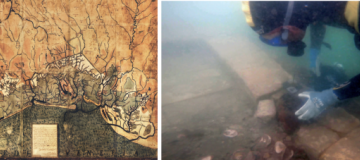
A Roman Ostriarium in the Venetian Lagoon: the Discovery at Lio Piccolo Reveals an Ancient Landscape
17.04.2025
In the northern Venetian lagoon, at Lio Piccolo, archaeologists have uncovered a Roman ostriarium dating to the 1st century CE—the first ever found in Italy. The structure is a rectangular basin built with bricks and wooden planks, buried in the lagoon sediment, and used to keep oysters alive before consumption. Inside, researchers found around 300 shells of Ostrea edulis, a species now nearly extinct in the lagoon.
What makes this discovery exceptional is that similar facilities, used in Roman times for oyster farming or storage, are known only from a handful of examples—most notably in the lagoon of Narbonne, France. Dendrochronological and radiocarbon dating confirmed the construction of the structure in the mid-1st century CE.
Near the vivarium, excavations revealed the remains of a luxurious seaside villa, with fragments of frescoes, mosaics, fine marble, and even a carved gemstone — evidence of a wealthy elite inhabiting and managing the lagoon environment with sophistication and purpose.
The Department of Geosciences at the University of Padua contributed to the research, with Professor Paolo Mozzi responsible for the site’s geomorphological reconstruction as part of the PRIN 2022 project Lagoon of Venice in Antiquity. Mozzi also co-authored the exhibition texts and educational video.
The results of the discovery are now on display at the Giancarlo Ligabue Museum of Natural History in Venice, in the exhibition A Roman Ostriarium in the Venetian Lagoon, open until 2 November 2025. Visitors will find original artifacts, excavation footage, images, and a 3D model of the site.
A unique find that brings back to life the ancient landscape of the lagoon—shaped by water, ingenuity, and daily life.
| Download the poster
|





